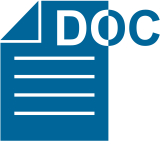POTENSI GAMBUT UNTUK PENGEMBANGAN PLTU DI KECAMATAN TELUK MERANTI, KABUPATEN PELALAWAN, PROVINSI RIAU
Abstract
Sumber daya gambut di Indonesia cukup berlimpah. Terlepas dari pertentangan dalam pemanfaatannya, gambut dapat digunakan sebagai alternatif bahan bakar Pembangkit Listrik Tenaga Uap (PLTU), karena memiliki syarat yang bisa terpenuhi dan mempunyai karakteristik yang identik dengan batubara kalori rendah. Tujuan penelitian ini adalah untuk mengetahui jumlah potensi sumber daya gambut dan estimasi suplai sebagai bahan bakar alternatif untuk PLTU. Lokasi penelitian terletak di wilayah Kecamatan Teluk Meranti, Kabupaten Pelalawan, Provinsi Riau. Ketebalan gambut di daerah ini bervariasi antara 0,7 m sampai dengan 8,7 m dan memiliki nilai kalori rata-rata 5.070 kal/gram (adb). Cadangan terkira gambut yang digunakan untuk PLTU adalah gambut yang memiliki ketebalan kurang dari tiga meter sebesar 45.238.945 ton di Kecamatan Teluk Meranti. Untuk energi listrik dengan kapasitas terpasang 100 MW, gambut pada Blok Teluk Meranti dapat menyuplai bahan bakar untuk PLTU selama ± 114 tahun.
Downloads
References
Apuhtin, P. A dan Plakitkina, L. S., 2011, Peat Extraction in Russia and in the World: The Analysis of Russian and World Peat Industry Development in 2000 – 2009. Mining Industry Journal.
BPS Pelalawan, 2018, Teluk Meranti Dalam Angka 2018. Pelalawan.
Cameron, N.R., Ghazali, S.A., Thompson, S.J., 1982, Peta Geologi Lembar Siaksriindrapura dan Tanjung Pinang, Sumatera. Bandung.
Clarke, M.C.G., Kartawa, W., Djunuddin, A., Suganda, E., Bagdja, M., 1982, Peta Geologi Lembar Pakanbaru, Sumatera. Bandung.
Clarke, A.W., Trinnaman, J.A. (Eds.), 2010, Survey of Energy Resources. World Energy Council.
Lehtomaki ,K. J., Kortela , U. K. J.danLuukkanen ,J. J., 1981, New Estimation And Control Methods For Fuel Power In Peat Power Plants, (8th Triennial World Congress) Kyoto, Japan.
Marsudi, I.D., 2005, Pembangkitan Energi Listrik. Penerbit Erlangga, Jakarta.
Moran, M.J., Shapiro, H.N., Boettner, D.D., Bailey, M.B., 2014, Fundamentals of Engineering Thermodynamics, Eight Edit. ed. Wiley, New Jersey.
Peraturan Pemerintah Nomor 57 Tahun 2016
Prasetyo, E.G., Sulasno, Handoko, S., 2011, Studi Tentang Indeks Keandalan Pembangkit Tenaga Listrik. Univ. Diponegoro.
Rahgozar, M. A. and Saberian, M., 2015, Physical and Chemical Properties of two Iranian of Type, Mires and Peat, Volume 16, Article 07, 1-17.
Silitonga, P.H., K., 1995, Peta Geologi Lembar Solok, Sumatera. Bandung.
Sinambela, Y.T., 2007, Studi Operasional PLTU Embalut dan Pengaruhnya Terhadap Tarif Listrik Regional Kalimantan Timur. Stud. Oper. PLTU Embalut dan Pengaruhnya Terhadap Tarif List. Reg. Kalimantan Timur.
Subarnas, A., 2018, Survei Tinjau Gambut, Kabupaten Pelalawan, Provinsi Riau, Pusat Sumber Daya Mineral Batubara dan Panas Bumi. Bandung.
Suwarna, N., Budhitrisna, T., Santosa, S., Andi Manga, S., 1994, Peta Geologi Lembar Rengat, Sumatera. Bandung.
Tcvetkov, P.S., 2017, The history, present status and future prospects of the Russian fuel peat industry, Mires and Peat, Volume 19, International Mire Conservation Group and International Peatland Society, DOI: 10.19189/MaP.2016.OMB.256
World Energy Council (WEC), 2013, World Energy Resources: 2013 survey. World Energy Counc. 11. https://doi.org/http://www.worldenergy.org/wpcontent/uploads/2013/09/Complete_WER_2013_Survey.pdf
Zhong, J., 2018. Power System Economic and Market Operations. CRC Press, Taylor and Francis Group, Boca Raton, Florida.
Copyright (c) 2019 Buletin Sumber Daya Geologi

This work is licensed under a Creative Commons Attribution-NonCommercial-ShareAlike 4.0 International License.
Authors whose manuscripts are published agree to the following terms:
The publication rights of all journal manuscript materials published on the Buletin Sumber Daya Geologi website are held by the editorial board with the knowledge of the author (moral rights remain with the manuscript’s author).
The formal legal provisions for access to digital articles in this electronic journal are subject to the terms of the Creative Commons Attribution-ShareAlike (CC BY-SA) license. This means that Buletin Sumber Daya Geologi has the right to store, convert media/formats, manage in the form of a database, maintain, and publish the article without requesting permission from the author, as long as the author’s name is cited as the copyright holder.
Manuscripts published in both print and electronic formats are open access for educational, research, investigative, and library purposes. Beyond these purposes, the editorial board is not responsible for any violations of copyright law.















